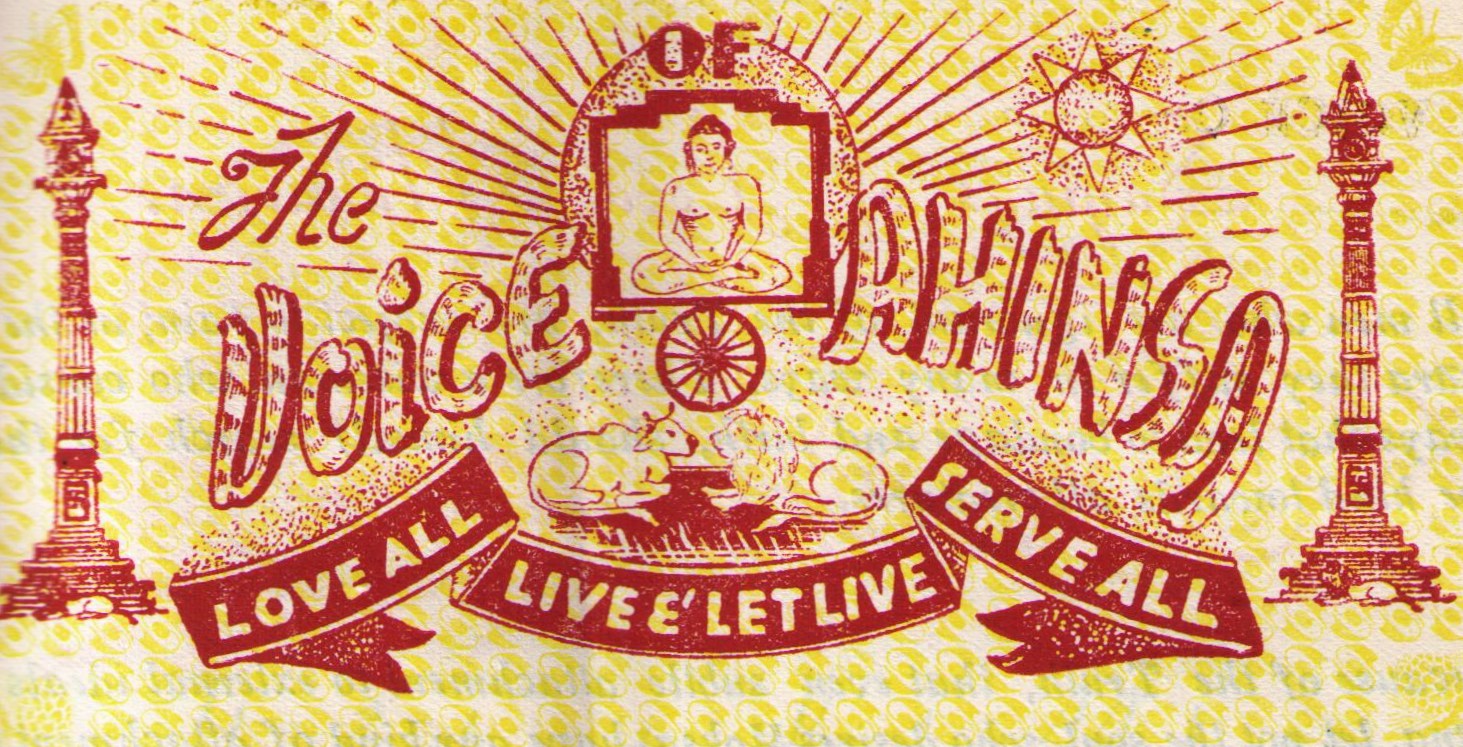
This paper by the Scholar of Tibetan Studies Prof. Giuseppe Tucci was published in the Lord Mahavira Special Number of the periodical The Voice of Ahinsa (Vol. VI, No. 3-4, March-April 1956, pp. 69-70.
Mahāvīra
Jainism presents itself with the same characteristic as Buddhism: an ascesis, a moral discipline, the glorification of a Teacher, which due to concessions to the exigences of the masses transforms itself into a true and real religion. Originally Vardhamāna or Mahāvīra was considered as the revelator of the Jain doctrine or better as that personality who gave the clearest and precisest formulation to a most ancient form of Yoga. This was, in fact, already preached by one of His predecessors named Pārśva, the last but one of the 24 Tīrthaṅkaras. Probably it is due to Pārśva that the Jaina doctrine descends from the very beginning of the times: while the remaining 22 Tīrthaṅkaras rather seems mythological figures. [1] Pārśva is, in all probability, a historical figure.
In due course of time in conformity with the natural tendency of the people to worship its spiritual guides and to deify them, Vardhamāna was posted and installed on the altars of worship. Temples of His own were erected and a cult spread after that of the Hindus and performed by Brāhmaṇas prevailed. This perhaps was started in the 11th or 12th century A.D. [2] But in spite of being much spread among the laity, it did not corrupt the Sādhus (the ascetics) and the monks who followed their master considering Him as a Liberated Soul: pacified for ever in Nirvāṇa. According to the Jaina orthodoxy one cannot speak of a cult in the proper sense accorded to the images of the Tīrthaṅkaras by the believers, offering flowers and hymns. These images magnify the gratitude of the believers for the great figures of the saints who have shown the way that how the soul is redeemed. The saints cannot accord any favour: at any rate a profound meditation on their virtues purifies the spirit and helps us, taking into consideration their example to find the path of salvation. This is naturally the opinion of the ascetics and the cultured persons; for the general people these distinctions have no value and there is no great difference in a Jain household between the lady who directs her prayers to Shiva and that who prays to the Tīrthaṅkaras.

Informations on Vardhamāna are not scarce for we can collect them from literature of Jainism and Buddhism. He was in fact almost a contemporary of Buddha, although he was some years older than the latter. Vardhamāna Mahāvīra, called later on Jina 'the victor' died after having obtained enlightenment, in 527 before Christ, nearly when Buddha left the family in order to retract to an ascetic life. He was the son of a prince of Kuṇḍagrāma Basukuṇḍa, near Vaiśālī and descended from the clan of Jñātra from which he derived his name Jñātaputra, under which he is known in the Buddhistic scriptures.
According to Śvetāmbaras He married and had a daughter; but when he reached 30 years and as soon as she was married and his parents observed Sallekhanā (starved in the last moments of death) according to a custom considered always as highly meritorious in Jainism and he had no more relations to the World, Vardhamāna took up an ascetic life. He crossed then Bengal, suffered the persecutions of the uncultivated inhabitants of Lādha (Rādha) and after 13 years of meditation, inflictions and penances obtained the enlightenment due to which his soul was definitively redempted from the involvement of matter. He was now a Jina in the same way as Śākyamuni obtained illumination under the Bodhi tree and had become a Buddha. He began then like Buddha to preach between Kosala, Videha, and Magadha, passing the rainy seasons at Vaiśālī, and Rāja-Graha whose king Bimbisāra was related to him from the side of his mother and attracted many followers who were called Nirgrantha, those who were free from fetters. As Buddha had to suffer the schism caused by Devadatta so also Mahāvīra saw his son-in-law Jamāli becoming initiator of a heresy which was followed after a short time by that provoked by an other of his disciples Gośāla. [3]
Vardhamāna is not, as one has pretended, a renovator, he has continued a tradition which goes back at least two centuries and he considered Pārśva as his predecessor. The sect continued to call itself Nirgrantha, those who were free from fetters and believed in certain fundamental dogmas which were expressed more in ascetic rules than logical and theological constructions. The Nirgranthas were yogis who based themselves on four principles, non-killing, not to lie, not to steal, not to fornicate, to which Vardhamāna added a fifth: non-possession.
But Vardhamāna took part in the aboundance of thoughts which surrounded him and with which was born the speculation of the Upaniṣads and of Buddhism. The preceding ascetism offered a speculative basis so similar to that of Buddhism that when one started to study Jainism in Europe it was thought that it was identical with Buddhism. Similar to the case of Buddha, one cannot will certainly indicate what is the personal and original contribution of Vardhamāna with regard to the dogmatic constructions with which the Jainism presents itself in its definite formulations.
(Translated from Italian by Prof. Lothar Wendel)
Jaina tradition, however, is unanimous in claiming all the 24 Tīrthaṅkaras as real personages. Time itself will prove its validity. - Editor of The Voice of Ahinsa.
The worship of Tīrthaṅkaras is older than Lord Mahāvīra. Temples and images of Ṛṣabha and other Tīrthaṅkaras were built long before Mahāvīra. It differs from Hindus, since it is more like the worship of heroes - the ideal Worship and not the idol worship. - Editor of The Voice of Ahinsa.
 Prof. Dr. Giuseppe Tucci
Prof. Dr. Giuseppe Tucci